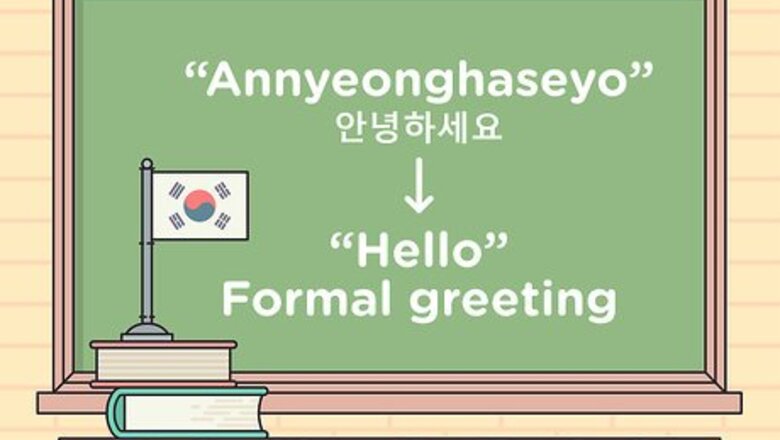
views
X
Research source
Showing Politeness and Respect
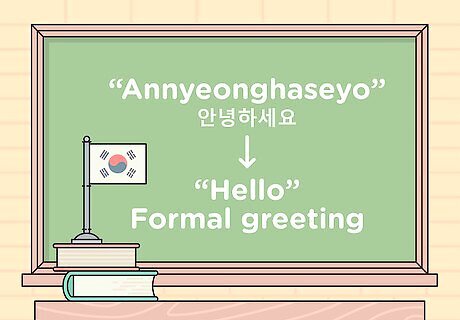
Say 안녕하세요 (an-nyeong-ha-se-yo) when meeting someone for the first time. If you're an adult and you're talking to someone you don't know, 안녕하세요 (an-nyeong-ha-se-yo) is your best choice to say "hello." This greeting is considered rather formal and shows respect for the person you're greeting. This greeting should also be used in any context where it's important to maintain a degree of formality, such as in the workplace, even if you're talking to someone you're friendly with. Children also use this greeting when saying hello to adults.Tip: The 요 (yo) at the end of the greeting tells you that it's polite. Any time you see 요 (yo), you know that the word or phrase being used is polite and generally acceptable to use among adults to convey the proper respect.
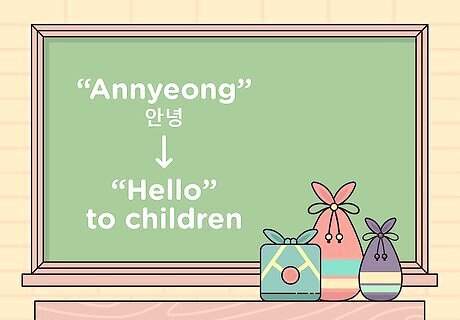
Use 안녕 (an-nyeong) when talking to children. 안녕 (an-nyeong) is a shortened, more informal version of the standard greeting 안녕하세요 (an-nyeong-ha-se-yo). This greeting is most commonly used among children and family members. However, it would rarely be used by adults unless they were greeting a child. 안녕 (an-nyeong) is also used among friends. However, for adults over the age of 30, you'll typically only hear this greeting between women. Men rarely, if ever, use it unless talking to a child. In Korean society, it is generally seen as inappropriate for an adult man to be using an expression that children use.Tip: 안녕 (an-nyeong) is used to mean both "hello" and "goodbye." However, 안녕하세요 (an-nyeong-ha-se-yo) is only used to mean "hello."

Try other informal greetings if you are an adult man. An adult man in Korea would never greet his friends with 안녕 (an-nyeong) because it is a phrase used by women and children. However, there are a number of other phrases adult men use to greet friends that are a little less formal than 안녕하세요 (an-nyeong-ha-se-yo) but still convey the proper politeness. These greetings include: 반갑다! (ban-gap-da): This phrase means "it's good to see you" and is the most common informal greeting among adult male friends. Also may be used by teenagers and children. 잘 지냈어? (jal ji-ne-sseo?): Similar to "how are you," this phrase asks "have you been well?" Also a common greeting among adult male friends. Teenagers and children also use this greeting. 오랜만이야 (o-ren-ma-ni-ya): "Long time no see," used between adult male friends who haven't seen each other in a while. Children and teenagers will also say this to each other in the same context. 얼굴 보니까 좋다 (ul-gul bo-ni-gga jo-ta): "It's good to see your face," a colloquial, informal greeting used exclusively between adult friends.
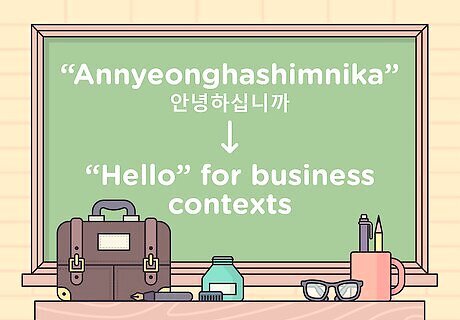
Listen for 안녕하십니까 (an-nyeong-ha-shim-ni-ka) in business contexts. 안녕하십니까 (an-nyeong-ha-shim-ni-ka) is a super formal way of saying "hello" in Korean, and is typically only used by a business owner who wants to show respect to their customers. It's intended to show a great deal of respect and deference. While you won't be greeted this way in every shop or restaurant you enter in Korea, you're likely to hear it in fancier places. Airline staff will also greet you this way on a Korean airline. You may be greeted this way while in Korea, but you would seldom have any opportunity to use it yourself unless you work in a customer service position in Korea. If you use this phrase in any other context, it will just make the people you greet feel awkward.
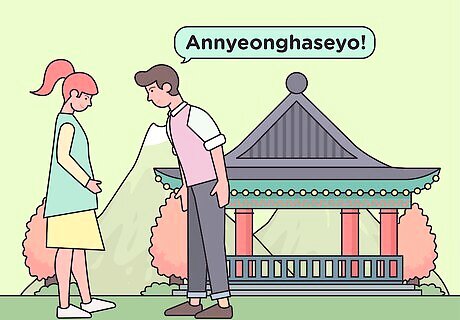
Accompany polite or formal greetings with a bow. When you greet anyone using a formal greeting, bend your head and waist about 45 degrees while looking down. If you're using a polite greeting with someone you know, bow 15 to 30 degrees. The depth of your bow depends on the person and the context. Someone older than you or in a position of authority would always get a deeper bow. Never make eye contact with the other person when you bow. This is considered rude. Connect through respectful greetings. "I was really nervous about meeting my girlfriend's traditional Korean parents for the first time. This article gave me the confidence I needed to make a good first impression. I practiced the polite greetings and bowed deeply when we met, even though I totally stumbled over the pronunciation at first. They seemed really impressed that I tried so hard to honor their culture. Now, we have a great relationship full of mutual respect." - Eric W. Pronounce names properly to show you care. "As a teacher with lots of Korean students, I want them to feel welcome on day one. This article helped me learn to say their names right when I'm taking attendance. Now, I can look each kid in the eye, say "annyeonghaseyo," and nail the pronunciation. The smiles on their faces show that it means a lot." - Michel S. Make Korean friends with the right greeting. "I love K-pop music and wanted to make friends who shared this interest. But I worried about seeming rude if I used the wrong greeting. This guide explained the polite and casual phrases simply. Now, I can approach fellow fans my age with "ban-gap-da" instead of something more formal. It's helped me make Korean buds who think it's cool. I took the time to learn." - Rocio G. Appreciate elders by bowing deeply. "Starting a new job at a Korean company, I wasn't sure how to properly greet the executives. This article emphasizes bowing really low to show respect. So now, each morning, I say "annyeonghaseyo" and bend about 45 degrees to the bosses. They seem to appreciate that extra show of deference from a newbie employee." - Hannah C. We want to hear from you! Advice from our readers makes our articles better. If you have a story you’d like to share, tell us here.
Using Other Types of Greetings

Answer the phone with 여보세요 (yeo-bo-se-yo). 여보세요 (yeo-bo-se-yo) is a way of saying "hello," but it's only ever used when answering the phone. It would be inappropriate and borderline rude to use it in person or in any other context. Because the phrase ends in 요 (yo), it is considered polite and is appropriate to use regardless of who's on the other end of the line.
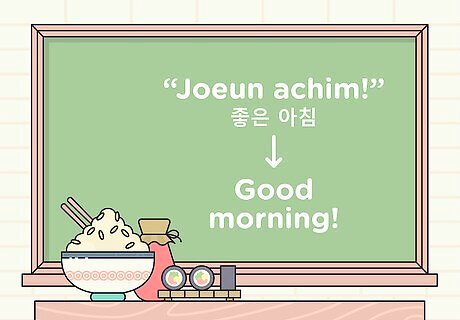
Switch to 좋은 아침 (jo-eun a-chim) first thing in the morning. Unlike English and many other languages, there are no distinct greetings in Korea that depend on the time of the day. However, first thing in the morning you can use 좋은 아침 (jo-eun a-chim), which literally means "good morning." While people will understand you when you say this, it isn't a commonly used greeting. It's best used between people you know relatively well, especially if one of them has said it to you first.
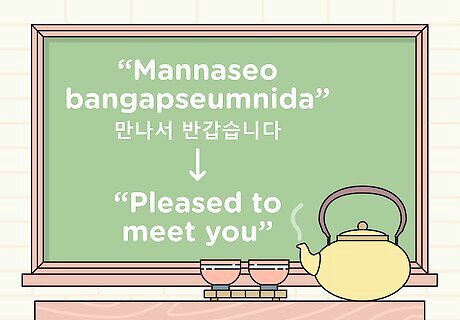
Say 만나서 반갑습니다 (man-na-se-o ban-gap-seum-ni-da) after being introduced to someone new. 만나서 반갑습니다 (man-na-se-o ban-gap-seum-ni-da) means, roughly, "pleased to meet you." If you meet someone in a formal or professional setting, this is the phrase to use. Don't forget to bow while saying this unless you've already bowed. This phrase is also appropriate if you're meeting someone who appears to be older than you or is in a position of authority.
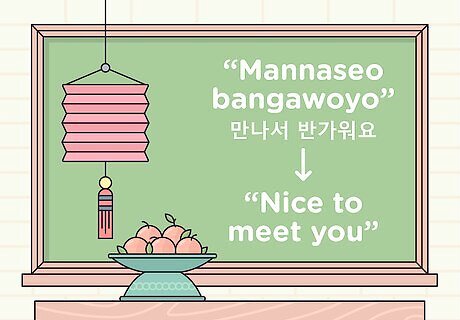
Try 만나서 반가워요(man-na-se-o ban-ga-wo-yo) if meeting someone around your age or younger. 만나서 반가워요(man-na-se-o ban-ga-wo-yo) is the more informal version of 만나서 반갑습니다 (man-na-se-o ban-gap-seum-ni-da) and also means "nice to meet you." This phrase is appropriate when you're being introduced to someone your age or younger. Remember to pay attention to context as well as the age of the person you're greeting. If you're meeting someone your age in a professional or formal setting, you would typically still use 만나서 반갑습니다 (man-na-se-o ban-gap-seum-ni-da). 만나서 반가워요(man-na-se-o ban-ga-wo-yo) is appropriate in a casual social setting, such as when you're introduced to the friend of a friend.Culture Tip: If you're unsure what level of politeness to use, stick with the more polite greeting. No one will fault you for being too polite or formal, but you could cause offense if you are too casual with someone.

















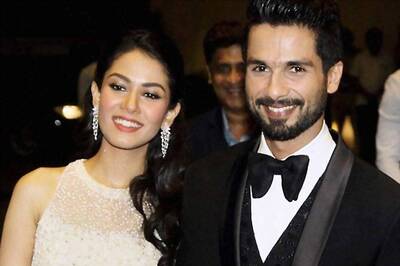
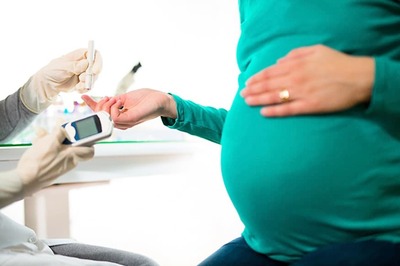

Comments
0 comment